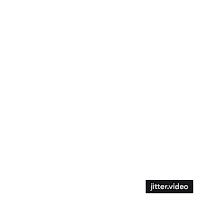Multiple-choice questions (MCQs) for the USMLE
 |
| multiple-choice questions (MCQs) for the USMLE |
A 45-year-old man presents with chest pain that radiates to his left arm. An ECG shows ST-segment elevation in leads II, III, and aVF. Which artery is most likely occluded?
A. Left anterior descending artery
B. Left circumflex artery
C. Right coronary artery
D. Left main coronary artery
E. Posterior descending artery
A 28-year-old woman presents with fatigue, pallor, and a high reticulocyte count. Laboratory tests reveal hemoglobin of 7 g/dL, elevated indirect bilirubin, and elevated lactate dehydrogenase (LDH). What is the most likely diagnosis?
A. Iron deficiency anemia
B. Thalassemia
C. Hemolytic anemia
D. Aplastic anemia
E. Sickle cell anemia
A 60-year-old man with a history of hypertension and diabetes mellitus presents with sudden onset of right-sided weakness and difficulty speaking. A CT scan of the head shows an ischemic stroke. Which of the following is the most appropriate initial treatment?
A. Intravenous heparin
B. Aspirin
C. Tissue plasminogen activator (tPA)
D. Warfarin
E. Clopidogrel
A 5-year-old boy is brought to the clinic by his mother because of a persistent cough and wheezing. On examination, he has nasal polyps and digital clubbing. Sweat chloride test results are positive. What is the most likely diagnosis?
A. Asthma
B. Bronchiectasis
C. Cystic fibrosis
D. Primary ciliary dyskinesia
E. Tuberculosis
A 32-year-old woman presents with fever, arthralgias, and a malar rash. Laboratory findings reveal a positive antinuclear antibody (ANA) test and anti-double-stranded DNA antibodies. What is the most likely diagnosis?
A. Rheumatoid arthritis
B. Systemic lupus erythematosus
C. Sjogren's syndrome
D. Dermatomyositis
E. Systemic sclerosis
A 67-year-old man presents with difficulty initiating urination and a weak urine stream. A digital rectal examination reveals a uniformly enlarged, firm, and nontender prostate. What is the most likely diagnosis?
A. Prostate cancer
B. Benign prostatic hyperplasia
C. Prostatitis
D. Urethral stricture
E. Bladder carcinoma
A 25-year-old woman presents with tremors, palpitations, and weight loss. Physical examination reveals exophthalmos and a diffusely enlarged thyroid gland. Laboratory tests show elevated free T4 and suppressed TSH. What is the most likely diagnosis?
A. Hashimoto's thyroiditis
B. Subacute thyroiditis
C. Graves' disease
D. Toxic multinodular goiter
E. Thyroid adenoma
A 50-year-old woman presents with progressive shortness of breath and dry cough. Chest X-ray shows bilateral hilar lymphadenopathy. A biopsy of the lymph nodes reveals non-caseating granulomas. What is the most likely diagnosis?
A. Tuberculosis
B. Sarcoidosis
C. Histoplasmosis
D. Berylliosis
E. Lymphoma
A 30-year-old woman presents with a sudden onset of severe right lower quadrant abdominal pain, nausea, and vomiting. Physical examination reveals tenderness in the right lower quadrant with rebound tenderness. Which of the following is the most likely diagnosis?
A. Cholecystitis
B. Ovarian torsion
C. Ectopic pregnancy
D. Acute appendicitis
E. Pelvic inflammatory disease
A 40-year-old man presents with jaundice, pruritus, and dark urine. Laboratory tests show elevated conjugated bilirubin, alkaline phosphatase, and gamma-glutamyl transferase (GGT). Imaging reveals intrahepatic and extrahepatic bile duct dilation. What is the most likely diagnosis?
A. Hepatitis B
B. Primary sclerosing cholangitis
C. Choledocholithiasis
D. Alcoholic liver disease
E. Autoimmune hepatitis
Answers:
C. Right coronary artery
C. Hemolytic anemia
C. Tissue plasminogen activator (tPA)
C. Cystic fibrosis
B. Systemic lupus erythematosus
B. Benign prostatic hyperplasia
C. Graves' disease
B. Sarcoidosis
D. Acute appendicitis
C. Choledocholithiasis









What is your say on this?